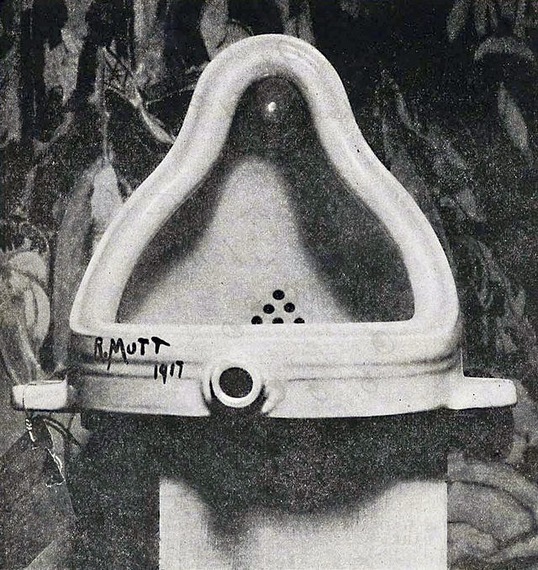
"For Nude Descending (a Staircase), I wanted to create a static image of movement; movement as an abstraction, an articulated deduction within the painting, without our knowing if a real person is or isn't descending any equally real staircase. Fundamentally, movement is in the eye of the spectator, who incorporates it into the painting."The show begins by tracing a burst of interest in erotic drawing based on Cranach, Ingres and Courbet that occurred at the very end of his career and then goes back to his early work as a painter. Duchamp is quoted as saying,
"I believe in eroticism a lot {...}It replaces, if your wish, what other literary schools called romanticism. It could be another 'ism,' so to speak."In Duchamp's eyes, eroticism was as much of a movement as expression and cubism. Besides unifying the concerns of Duchamp's career, the exhibition of early work also demonstrates one of the reasons that the artist may have given up painting. Duchamp was a student of contemporaries like Kandinsky, Braque, Cezanne, Manet and Matisse. Yet he was plainly not in the same league. There who can do do and those who can't do teach. Here one might iterate those who can do paint and those who can't do conceptualize. As he remarked in l949,
"The Large Glass (The Bride Stripped Bare By Her Bachelors, Even) in actual fact is not meant to be looked at (with 'aesthetic' eyes). It should have been accompanied by a 'literary' text as amorphous as possible, which never took shape. And the two elements, glass for the eyes, text for the ears and understanding, were meant to complement each other and above all prevent one or the other from taking on an aesthetic-plastic or literary form."
photo of Marcel Duchamp's Fountain by Alfred Stieglitz
{This was originally posted to The Screaming Pope, Francis Levy's blog of rants and reactions to contemporary politics, art and culture}